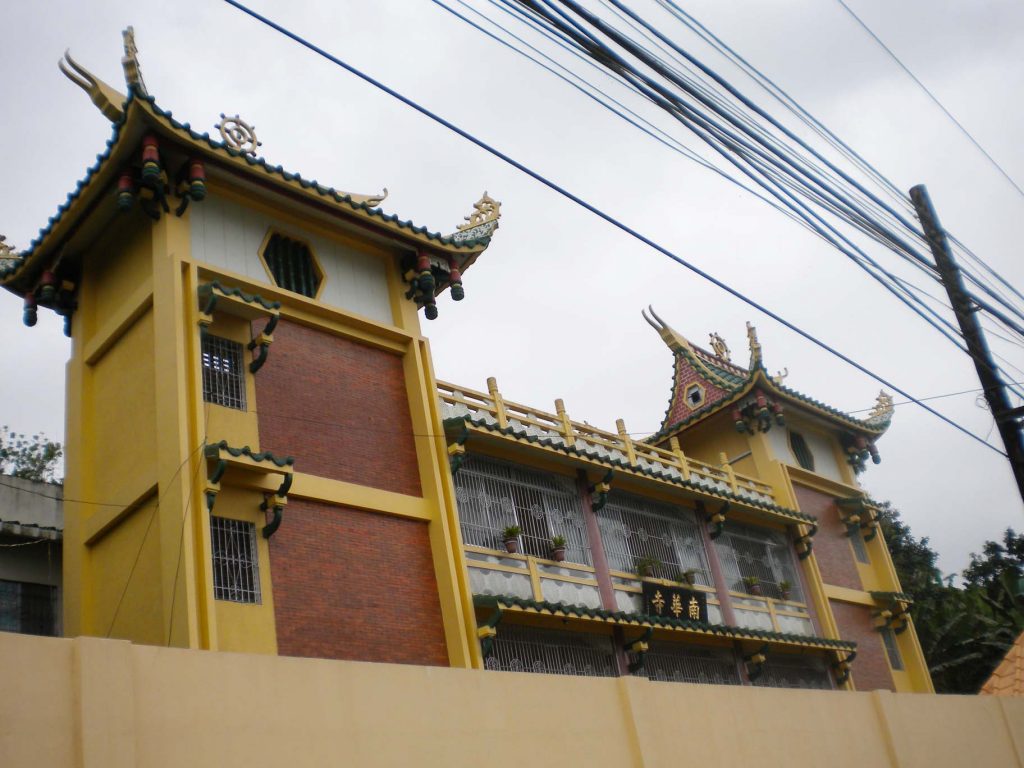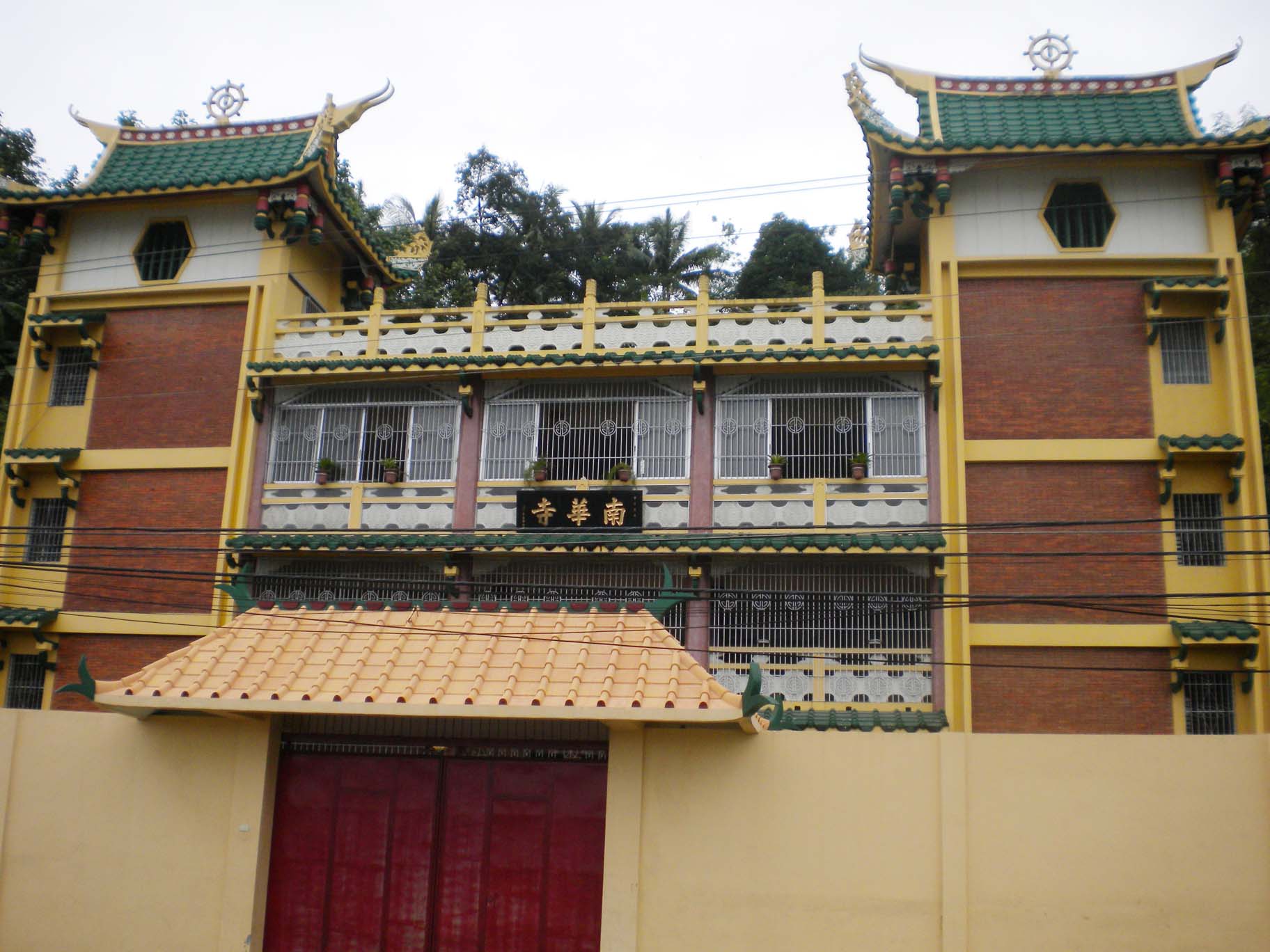Editors Note: This is the 31st of a series about the 36 Chinese Buddhist temples of the Philippines. Much of the information is from a thesis of Venerable Chuanmiao (Hsuan Chuang University, 2008), a Buddhist monk affiliated with the Thousand Buddha Temple in Quezon City.
31. Lam Hua Temple (南華寺)
Sabang District, Tacloban City | Tel. (053) 523-8259; 321-1123
Before 1976, a layman maintained a private shrine in the city dedicated to Guandi and Guanyin and called it Yixin Temple (一心寺).
In 1976, Ven. Huiyong (慧永), who was at the Manila Buddha Temple, came to Tacloban upon the invitation of his godsister, who had married a man from Tacloban.
Huiyong first stayed at Yixin Temple then moved to a rented apartment in 1977. He called his chapel the Lam Hua Temple and welcomed devotees to use it. In 1980, he bought the present temple property for P36,000. The property was nestled on a hill and faced the sea.
Groundbreaking ceremonies for the new temple were held in 1982. Ruijin was invited to preside. Ruijin contributed some money for the new temple, and Huiyong organized a Thousand Names of the Buddha chanting assembly at the Manila Buddha Temple to raise funds for the Tacloban temple.
A women’s association was also organized to help with fundraising. Work on the three-storey building was completed in 1984.
Around this time, Huiyong adopted a local boy named Laurence Ko and raised him at his temple. The boy later became a monk named Daxiu (達修) and being studious, was sent to Taiwan for formal Buddhist studies. He chose to remain there.
Huiyong died in 1994. In succeeding years, various monastics came to stay for short periods of time, most of them invited by the board of directors from temples in Manila, except for the nun Chuanyun (傳雲), who is from Nanputuo Temple (南普陀寺) in Xiamen.
Some Tacloban devotees had met her there and invited her to come. She stayed for about a year in 2002. The present abbot, Yinxiong (印雄), was invited to come from the White Horse Temple (白馬寺) in Luoyang in 2008.

Main buildings. Built on a hill, the temple’s lower floors are very narrow. The ground floor has a shrine to Guandi, and the wall has strips of paper corresponding to his divination sticks.
The ancestral hall is on the second floor, with numerous spirit tablets of local people. On the third floor is the Great Buddha Hall with statues of the three Buddhas, and side altars to the two protector bodhisattvas, Qielan (伽藍 Buddhist name of Guandi) and Weituo (韋陀).
The third floor worship area doubles as the refectory when meals are served. The abbot’s living quarters are also on the third floor.
Devotees believe they must build another hall on the fourth floor to be the temple’s “head.” They have been advised that without a head on top of the temple building, there would be no monastic to serve as a permanent abbot.
Leadership and primary activities. Yinxiong leads short chanting services on the first and 15th of the month, Guanyin feast days, and Buddha’s birthday.
During the seventh month, after the Manila temples have had their services, two monastics are invited to come from Manila for two days of chanting services for the dead.
On the 13th of the first and fifth months, a chanting service for Guandi under his Buddhist name as the bodhisattva Qielan, is organized. — First published in Tulay Fortnightly, Chinese-Filipino Digest 26, no. 3 (July 9-22, 2013): 14-15.
